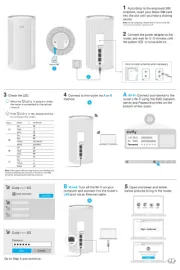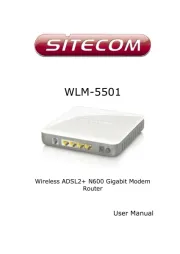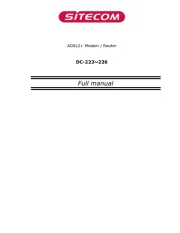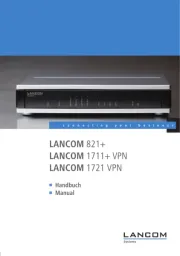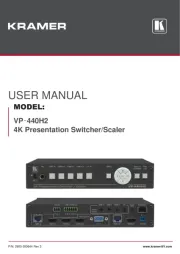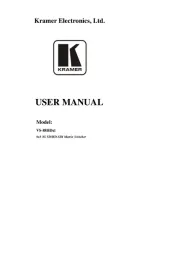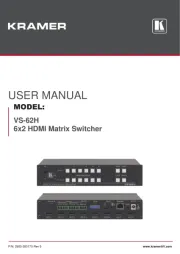The following are PORTER-CABLE trademarks for one or more power tools and accessories: a gray and black color
scheme; a “four point star” design; and three contrasting/outlined longitudinal stripes.
DEFINITIONS - SAFETY GUIDELINES
indicates an imminently hazardous situation which, if not
avoided, will result in death or serious injury.
indicates a potentially hazardous situation which, if not avoided,
could result in death or serious injury.
indicates a potentially haz ard ous situation which, if not avoided,
may result in minor or mod er ate injury.
NOTICE used without the safety alert symbol indicates potentially
hazardous situation which, if not avoided, result in may property damage.
To reduce the risk of injury, read the instruction manual.
GENERAL POWER TOOL SAFETY WARNINGS
Read all safety warnings and all instructions Failure to follow
the warnings and instructions may result in electric shock, fire and/or
serious injury.
SAVE ALL WARNINGS AND INSTRUCTIONS
FOR FUTURE REFERENCE
The term “power tool” in the warnings refers to your mains-operated (corded) power tool or
battery-operated (cordless) power tool.
1) WORK AREA SAFETY
a) Keep work area clean and well lit. Cluttered or dark areas invite accidents.
b) Do not operate power tools in explosive atmospheres, such as in the presence of
flammable liquids, gases or dust. Power tools create sparks which may ignite the dust or
fumes.
c) Keep children and bystanders away while operating a power tool. Distractions can
cause you to lose control.
2) ELECTRICAL SAFETY
a) Power tool plugs must match the outlet. Never modify the plug in any way. Do not
use any adapter plugs with earthed (grounded) power tools. Unmodified plugs and
matching outlets will reduce risk of electric shock.
b) Avoid body contact with earthed or grounded surfaces such as pipes, radiators,
ranges and refrigerators. There is an increased risk of electric shock if your body is earthed
or grounded.
c) Do not expose power tools to rain or wet conditions. Water entering a power tool will
increase the risk of electric shock.
d) Do not abuse the cord. Never use the cord for carrying, pulling or unplugging the
power tool. Keep cord away from heat, oil, sharp edges or moving parts. Damaged
or entangled cords increase the risk of electric shock.
e) When operating a power tool outdoors, use an extension cord suitable for outdoor
use. Use of a cord suitable for outdoor use reduces the risk of electric shock.
f) If operating a power tool in a damp location is unavoidable, use a ground fault
circuit interrupter (GFCI) protected supply. Use of a GFCI reduces the risk of electric
shock.
3) PERSONAL SAFETY
a) Stay alert, watch what you are doing and use common sense when operating a
power tool. Do not use a power tool while you are tired or under the influence of
drugs, alcohol or medication. A moment of inattention while operating power tools may
result in serious personal injury.
b) Use personal protective equipment. Always wear eye protection. Protective equipment
such as dust mask, non-skid safety shoes, hard hat, or hearing protection used for
appropriate conditions will reduce personal injuries.
c) Prevent unintentional starting. Ensure the switch is in the off position before
connecting to power source and/or battery pack, picking up or carrying the tool.
Carrying power tools with your finger on the switch or energizing power tools that have the
switch on invites accidents.
d) Remove any adjusting key or wrench before turning the power tool on. A wrench or
a key left attached to a rotating part of the power tool may result in personal injury.
e) Do not overreach. Keep proper footing and balance at all times. This enables better
control of the power tool in unexpected situations.
f) Dress properly. Do not wear loose clothing or jewelry. Keep your hair, clothing and
gloves away from moving parts. Loose clothes, jewelry or long hair can be caught in
moving parts.
g) If devices are provided for the connection of dust extraction and collection facilities,
ensure these are connected and properly used. Use of dust collection can reduce dust-
related hazards.
4) POWER TOOL USE AND CARE
a) Do not force the power tool. Use the correct power tool for your application. The
correct power tool will do the job better and safer at the rate for which it was designed.
b) Do not use the power tool if the switch does not turn it on and off. Any power tool
that cannot be controlled with the switch is dangerous and must be repaired.
c) Disconnect the plug from the power source and/or the battery pack from the power
tool before making any adjustments, changing accessories, or storing power tools.
Such preventive safety measures reduce the risk of starting the power tool accidentally.
d) Store idle power tools out of the reach of children and do not allow persons
unfamiliar with the power tool or these instructions to operate the power tool. Power
tools are dangerous in the hands of untrained users.
e) Maintain power tools. Check for misalignment or binding of moving parts, breakage
of parts and any other condition that may affect the power tool’s operation. If
damaged, have the power tool repaired before use. Many accidents are caused by
poorly maintained power tools.
f) Keep cutting tools sharp and clean. Properly maintained cutting tools with sharp cutting
edges are less likely to bind and are easier to control.
g) Use the power tool, accessories and tool bits, etc. in accordance with these
instructions, taking into account the working conditions and the work to be
performed. Use of the power tool for operations different from those intended could result
in a hazardous situation.
5) SERVICE
a) Have your power tool serviced by a qualified repair person using only identical
replacement parts. This will ensure that the safety of the power tool is maintained.
ADDITIONAL SPECIFIC SAFETY RULES
• Hold power tool by insulated gripping surfaces because the cutter may contact its
own cord. Cutting a “live” wire may make exposed metal parts of the tool “live” and shock the
operator.
• Use clamps or another practical way to secure and support the workpiece to a stable
platform. Holding the work by your hand or against the body leaves it unstable and may lead
to loss of control.
• Metal cutting with router: If using router for metal cutting, clean out tool often. Metal
dust and chips often accumulate on interior surfaces and could create a risk of serious injury,
electrical shock or death.
• Never run the motor unit when it is not inserted in one of the router bases. The motor
is not designed to be handheld.
• Keep handles dry, clean and free from oil and grease. This will enable better control of the
tool.
• Maintain a firm grip with both hands on the tool to resist starting torque. Maintain a firm
grip on the tool at all times while operating.
• Keep hands away from cutting area above and below the base. Never reach under the
workpiece for any reason. Keep the router base firmly in contact with the workpiece when
cutting.
• Never touch the bit immediately after use. It may be extremely hot.
• Be sure that the motor has stopped completely before you lay the router down. If the
bit is still spinning when the tool is laid down, it could cause injury or damage.
• Be sure that the router bit is clear of the workpiece before starting the motor. If the bit
is in contact with the workpiece when the motor starts, it could make the router jump, causing
damage or injury.
• Always follow the bit manufacturer’s speed recommendations as some bit designs
require specific speeds for safety or performance. If you are unsure of the proper speed
or are experiencing any type of problem, contact the bit manufacturer.
• Do not use router bits with a diameter in excess of 2-1/8" (29 mm) in this tool.
• Do not hand-hold the router in an upside-down or horizontal position. The motor can
separate from the base if not properly attached according to the instructions.
• Before starting the motor, check to see that the cord will not snag or impede the rout-
ing operation.
• Keep cutting pressure constant. Do not overload motor.
• Provide clearance under workpiece for bit when through-cutting.
• Tighten collet nut securely to prevent the bit from slipping.
• Never tighten collet nut without a bit.
• Always make sure the work surface is free from nails and other foreign objects. Cutting
into a nail can cause the bit and the tool to jump.
• Always keep chip shield (if included) clean and in place.
• Air vents often cover moving parts and should be avoided. Loose clothes, jewelry or long
hair can be caught in moving parts.
• An extension cord must have adequate wire size (AWG or American Wire Gauge) for
safety. The smaller the gauge number of the wire, the greater the capacity of the cable, that is
16 gauge has more capacity than 18 gauge. An undersized cord will cause a drop in line voltage
resulting in loss of power and overheating. When using more than one extension to make up
the total length, be sure each individual extension contains at least the minimum wire size. The
following table shows the correct size to use depending on cord length and nameplate ampere
rating. If in doubt, use the next heavier gauge. The smaller the gauge number, the heavier the
cord.
Minimum Gauge for Cord Sets
Ampere Rating
Volts Total Length of Cord in Feet (meters)
120V 25 (7.6) 50 (15.2) 100 (30.5) 150 (45.7)
240V 50 (15.2) 100 (30.5) 200 (61.0) 300 (91.4)
More
Than
Not More
Than AWG
0 6 18 16 16 14
6 10 18 16 14 12
10 12 16 16 14 12
12 16 14 12 Not Recommended
ALWAYS use safety glasses. Everyday eyeglasses are NOT safety glasses. Also use
face or dust mask if cutting operation is dusty. ALWAYS WEAR CERTIFIED SAFETY EQUIPMENT:
• ANSI Z87.1 eye protection (CAN/CSA Z94.3),
• ANSI S12.6 (S3.19) hearing protection,
• NIOSH/OSHA/MSHA respiratory protection.
Some dust created by power sanding, sawing, grinding, drilling, and other
construction activities contains chemicals known to the State of California to cause cancer, birth
defects or other reproductive harm. Some examples of these chemicals are:
• lead from lead-based paints,
• crystalline silica from bricks and cement and other masonry products, and
• arsenic and chromium from chemically-treated lumber.
Your risk from these exposures varies, depending on how often you do this type of work. To reduce
your exposure to these chemicals: work in a well ventilated area, and work with approved safety
equipment, such as those dust masks that are specially designed to filter out microscopic particles.
• Avoid prolonged contact with dust from power sanding, sawing, grinding, drilling, and
other construction activities. Wear protective clothing and wash exposed areas with
soap and water. Allowing dust to get into your mouth, eyes, or lay on the skin may promote
absorption of harmful chemicals.
Use of this tool can generate and/or disperse dust, which may cause serious and
permanent respiratory or other injury. Always use NIOSH/OSHA approved respiratory protection
appropriate for the dust exposure. Direct particles away from face and body.
Always wear proper personal hearing protection that conforms to ANSI S12.6
(S3.19) during use. Under some conditions and duration of use, noise from this product may
contribute to hearing loss.
• The label on your tool may include the following symbols. The symbols and their definitions are
as follows
V .....................volts A.........................amperes
Hz ...................hertz W .......................watts
min .................minutes or AC ............alternating current
or DC .....direct current or AC/DC .....alternating or direct current
...................Class I Construction no .......................no load speed
....
....
....
........
....
....
.......
...
...
.......
....
....
........
....
....
.......
...
...
....
.
.
.(grounded) n .........................rated speed
...................Class II Construction .......................earthing terminal
(double insulated) ........................safety alert symbol
…/min ............per minute BPM ...................beats per minute
IPM.................impacts per minute RPM ...................revolutions per minute
SPM ...............strokes per minute sfpm ...................surface feet per minute
SAVE THESE INSTRUCTIONS
MOTOR
Be sure your power supply agrees with the nameplate marking. Voltage decrease of more than
10% will cause loss of power and overheating. PORTER-CABLE tools are factory tested; if this tool
does not operate, check power supply.
COMPONENTS (Fig. 1–19)
Never modify the power tool or any part of it. Damage or personal injury could result.
A. Motor clamp (1001 base)
B. Motor lower pins
C. Adjustment ring
D. Index line
E. Base
F. Motor Unit
G. Mounting screws
H. Subbase
I. Collet nut
J. Motor clamp (6931 base)
K. Motor clamp screw (6931 base)
L. Lock washer and flat washer (6931 base)
M. Motor clamp nut (6931 base)
N. Locking plate (6931 base)
O. Pins (6931 base)
P. Slots (6931 base)
Q. Wrench
R. Depth rod locking knob (6931 base)
S. Turret stop (6931 base)
T. Depth indicator (6931 base)
U. Depth indicator knob (6931 base)
V. Depth rod (6931 base)
W. Three turret stops (6931 base)
X. Fixed turret stops (6931 base)
Y. Short turret stops (6931 base)
Z. Locking lever (6931 base)
AA. Lower limiting nut (6931 base)
BB. Upper limiting nut (6931 base)
CC. Retaining screw (6931 base)
DD. Adjustment screw (6931 base)
EE. Clamp screw (6911, 1001 bases)
FF. Motor Switch
GG. Knob handles (6911 base)
HH. Outlet handle (6911 base)
II. Power cord (6911 base)
JJ. Lock button (6911 base)
KK. Trigger switch (6911 base)
LL. Zero line (6911 base)
MM. "D" Handle Grip
INTENDED USE
This heavy-duty router is designed for professional routing applications.
DO NOT use under wet conditions or in presence of flammable liquids or gases.
This is a professional power tool. let children come into contact with the tool. Supervision DO NOT
is required when inexperienced operators use this tool.
Instruction manual
Manuel d'instructions
Manual de'instrucciones
Part No. N384509 MAY2014
Copyright © 2008, 2014 PORTER-CABLE
690 SERIES 1-3/4 PEAK
HP ROUTERS
SÉRIE 690 TOUPIES
DE 1-3/4 HP POINTE
SERIE 690 REBAJADORAS
DE 1-3/4 HP MÁXIMOS
www.portercable.com
INSTRUCTIVO DE OPERACIÓN, CENTROS
DE SERVICIO Y PÓLIZA DE GARANTÍA.
LÉASE ESTE INSTRUCTIVO
ANTES DE USAR EL PRODUCTO.
690LR
691
693LRPK
9690LR









